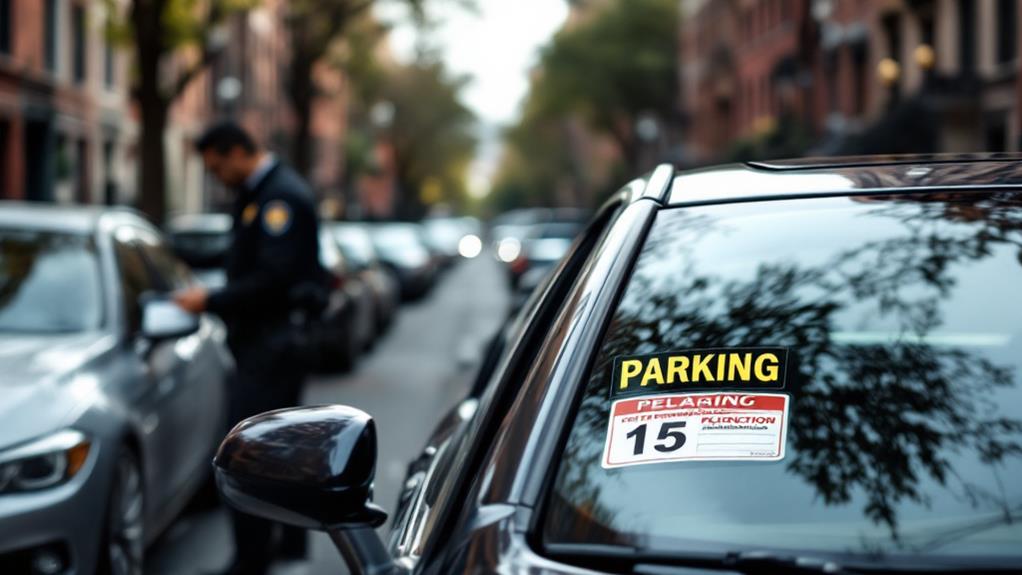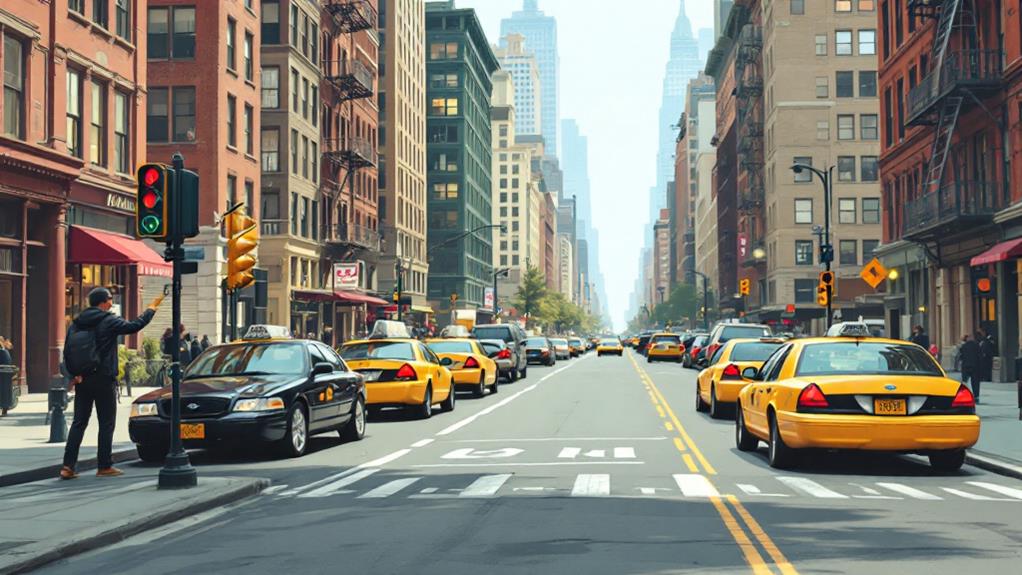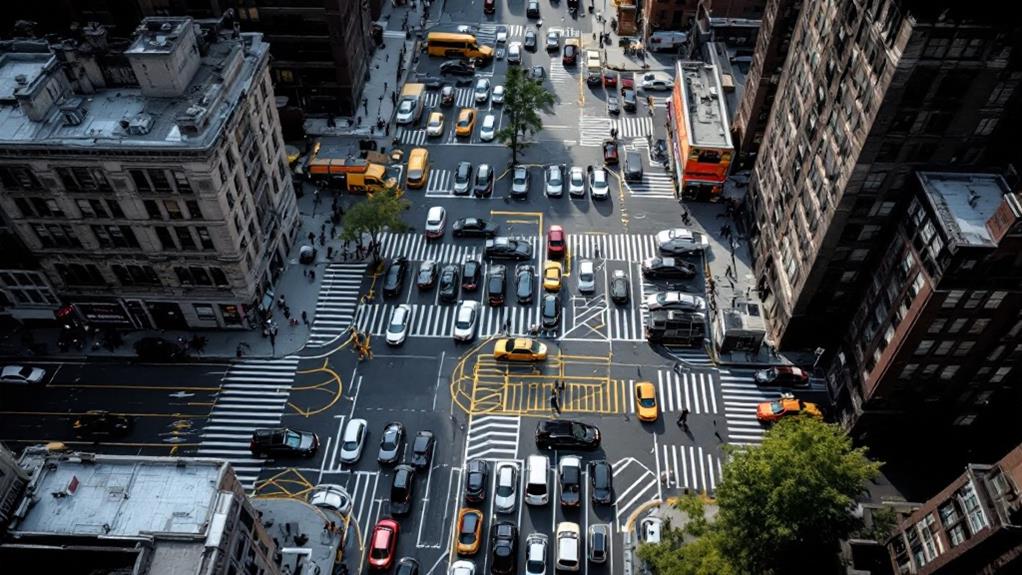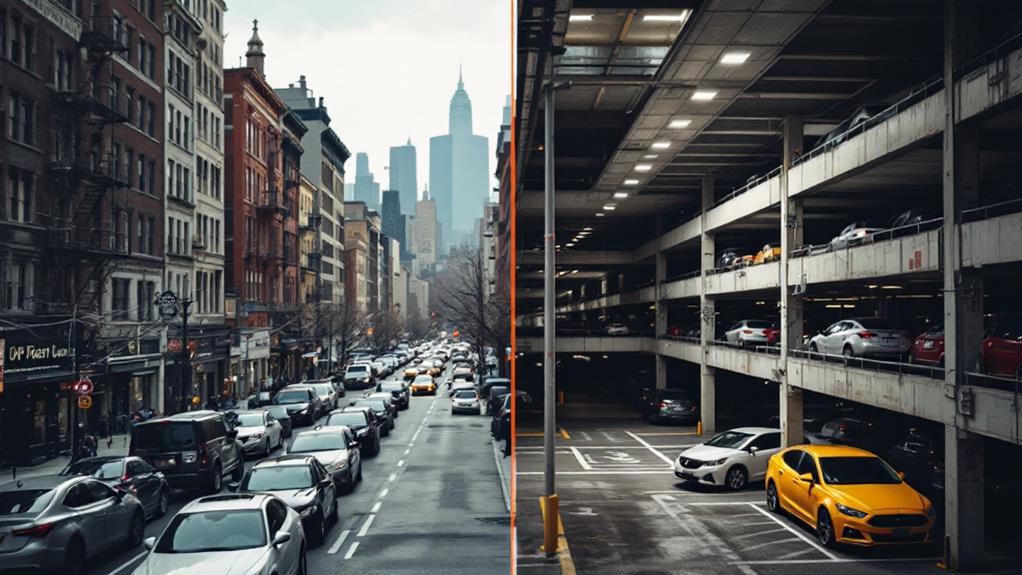How NYC's One-Way Streets Complicate Finding Parking
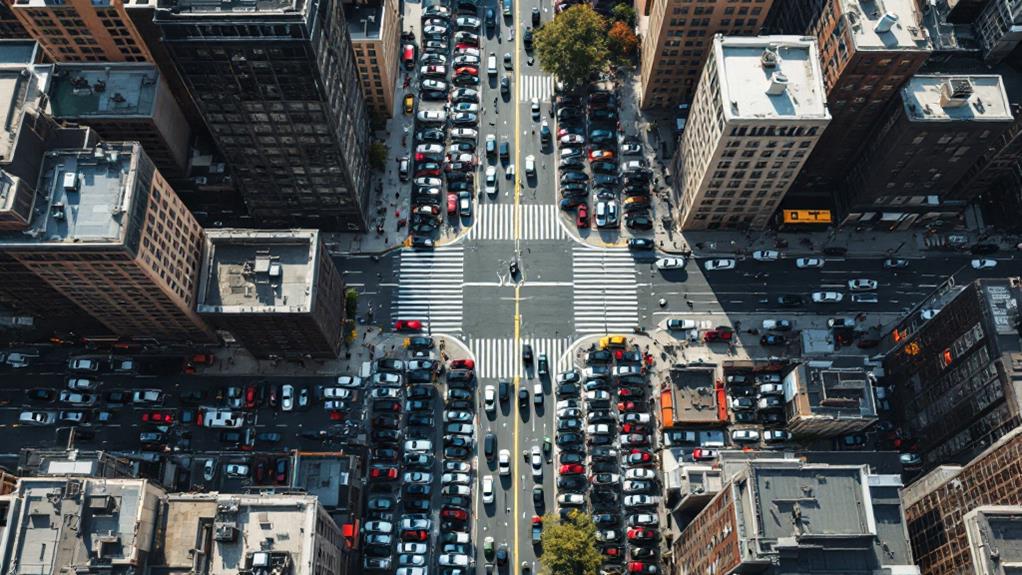
NYC's one-way street system, covering over 90% of Manhattan, makes finding parking a real challenge. You'll face reduced curbside spaces, as cars can only park on one side of these streets. You'll often need to take longer routes and make multiple turns to access open spots, potentially ending up far from your destination. The system forces you to pay close attention to signage and regulations, adding complexity to your parking quest. While frustrating, there are strategies to traverse this maze, including using mobile apps and considering alternatives like garages. Conquering NYC's parking territory requires patience, but it's not impossible with the right approach.
Understanding NYC's One-Way Street System
Anyone who's driven in New York City knows the challenge of maneuvering its labyrinthine one-way street system. The city's street grid is primarily composed of one-way streets designed to manage traffic flow, but this layout complicates the search for legal parking spots.
As you traverse Manhattan's streets, you'll quickly realize that over 90% of them are one-way. This complex system limits the number of available parking spaces and often forces you to take longer routes to reach your desired spot. You'll need to pay close attention to street signage and parking regulations to avoid costly parking tickets.
Understanding NYC's one-way street system is essential for finding parking efficiently. As you drive, you'll need to plan your route carefully, considering the directionality of each street. This can be especially frustrating when you spot an open space but can't access it due to the one-way traffic flow. To maximize your chances of finding legal parking spots, familiarize yourself with the area's street patterns and be prepared to circle blocks multiple times. Remember, patience and attention to detail are key when traveling one-way streets in the Big Apple.
Impact on Parking Availability
The scarcity of parking in New York City is exacerbated by its extensive one-way street system. As you traverse the city's intricate network of one-way streets, you'll quickly realize how they contribute to the parking challenges you face.
One-way streets drastically reduce the number of available parking spots throughout New York City. You'll notice that cars can only park on one side of these streets, effectively cutting the potential curbside parking spaces in half. This limitation makes it harder for you to find street parking near your destination.
When you're driving in search of a parking spot, one-way streets force you to take longer routes. You can't simply circle back to an open space you've just passed on the wrong side of the street. Instead, you'll need to maneuver through multiple blocks to return to that coveted spot, often losing it to another driver in the process.
The complexity of New York City's one-way street system adds another layer of difficulty to your parking quest. As a driver, you'll need to plan your route carefully, considering the directional flow of each street to access available parking efficiently.
Navigating the Maze
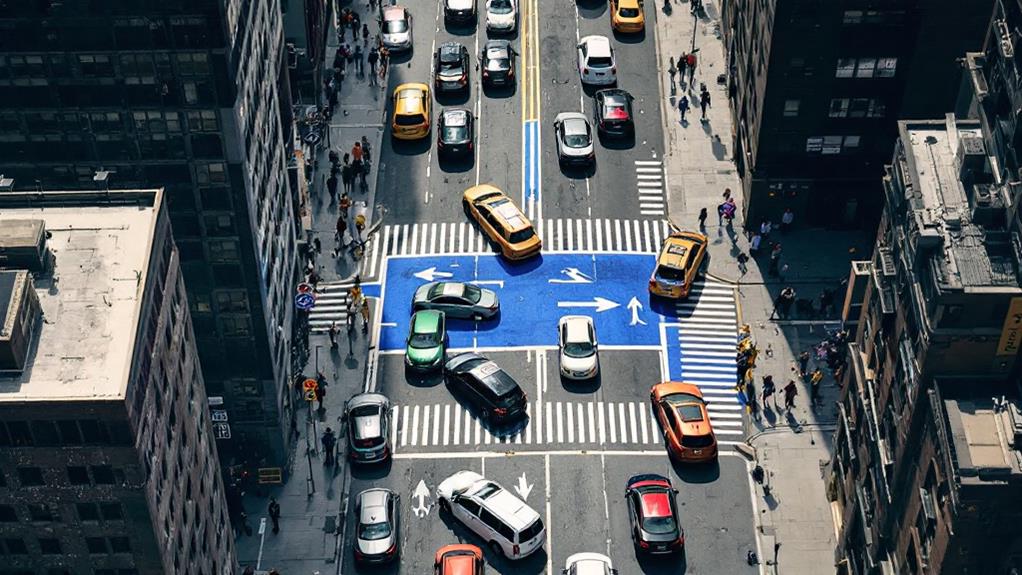
Traversing New York City's maze of one-way streets can feel like solving a complex puzzle when you're searching for parking. As you trek the city's unidirectional traffic flow, you'll quickly realize that finding a spot isn't as simple as driving down a single street. One-way streets limit your access to parking spots, forcing you to make multiple turns and potentially travel greater distances to reach your destination.
You'll often find yourself circling blocks, unable to easily cross over to the other side of the street where you've spotted an empty space. This limitation in accessibility can lead to frustration and wasted time as you search for a place to park. The complexity of maneuvering these one-way patterns may even tempt you to double-park or block traffic, further complicating your quest for a spot.
As you continue your exploration, you might find that the only available parking is far from your intended destination. This inconvenience adds to the overall time spent looking for a spot and can make your trek through the city more challenging than anticipated.
Strategies for Finding Spots
Despite the challenges of one-way streets, savvy drivers can employ several strategies to find parking spots more efficiently in NYC. When maneuvering the crowded streets of New York City, you'll want to make use of mobile applications that provide real-time parking availability. These tools can help you identify open spots without circling the block multiple times.
Consider parking on cross-streets that intersect the one-way street you're targeting. While spots may be harder to come by, this approach can offer better access to your destination. Be sure to familiarize yourself with street cleaning schedules and alternate side parking rules to avoid costly tickets.
If you're still struggling to find a spot, don't overlook nearby parking garages or lots. While they may come at a premium, they offer a more reliable option than endlessly searching for street parking on congested one-way streets.
Alternatives to Street Parking
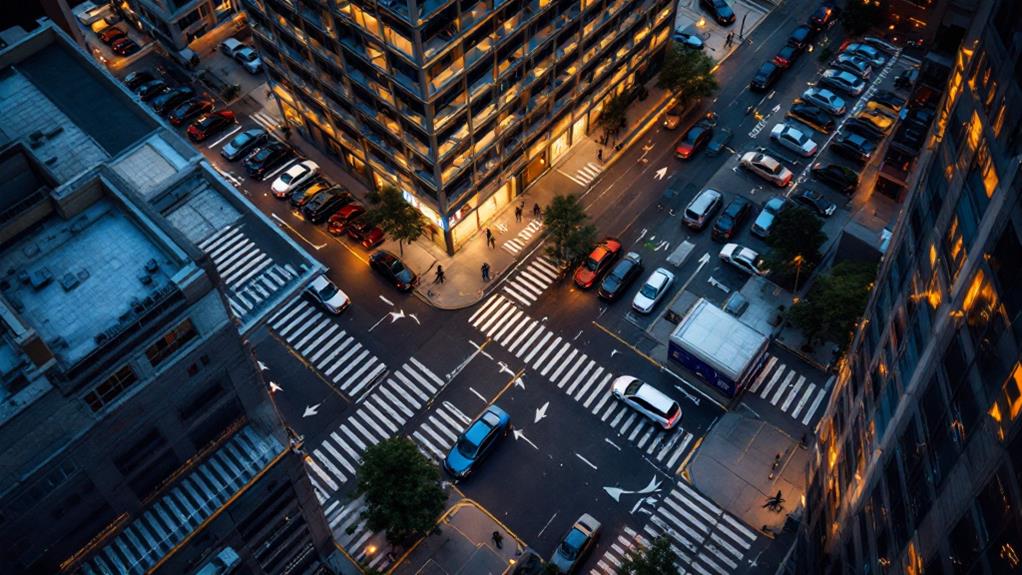
When street parking proves elusive, you'll want to investigate alternative options in NYC. Parking garages offer reliability but can be pricey, with Manhattan's average monthly rates hitting $441. However, you can examine peer-to-peer parking marketplaces like Neighbor, which often provide monthly options at half the cost of traditional garages.
Public transportation is a viable alternative that can reduce your need for parking altogether. While it might not suit every trip, the subway and buses can be efficient for many commutes. If you're set on driving, consider parking in outer boroughs or suburbs and taking public transit into the city. This approach can be more affordable than street parking in busy areas.
For those times when you need to park in the city, leverage parking apps like SpotHero to find and reserve garage spots, potentially leading to cost savings. Three key benefits of using parking alternatives:
- Reduced stress from searching for street spots
- Potentially lower costs compared to premium street parking
- Increased predictability and time management
Future of NYC Parking
New York City's parking environment is positioned for significant changes in the coming years. As the city grapples with increasing population density and traffic congestion, you'll likely see a shift in how NYC parking is managed and regulated.
The future of parking in the Big Apple will likely involve more technologically advanced solutions. You can expect the ParkNYC app to expand its features, potentially offering real-time parking space availability and fluctuating pricing based on demand. This could help alleviate the stress of finding parking on one-way streets and residential areas.
Street parking rules may become more stringent, with fewer free parking options available. You might see an increase in metered parking zones and a reduction in long-term parking on residential streets. The city may also implement smart parking systems that use sensors to detect available spaces and guide drivers efficiently.
As NYC pushes for greener transportation alternatives, you could see a decrease in overall parking spaces. This might lead to the conversion of some parking areas into bike lanes, pedestrian zones, or green spaces. Ultimately, the future of NYC parking will prioritize efficiency, sustainability, and technology-driven solutions to address the city's unique challenges.
